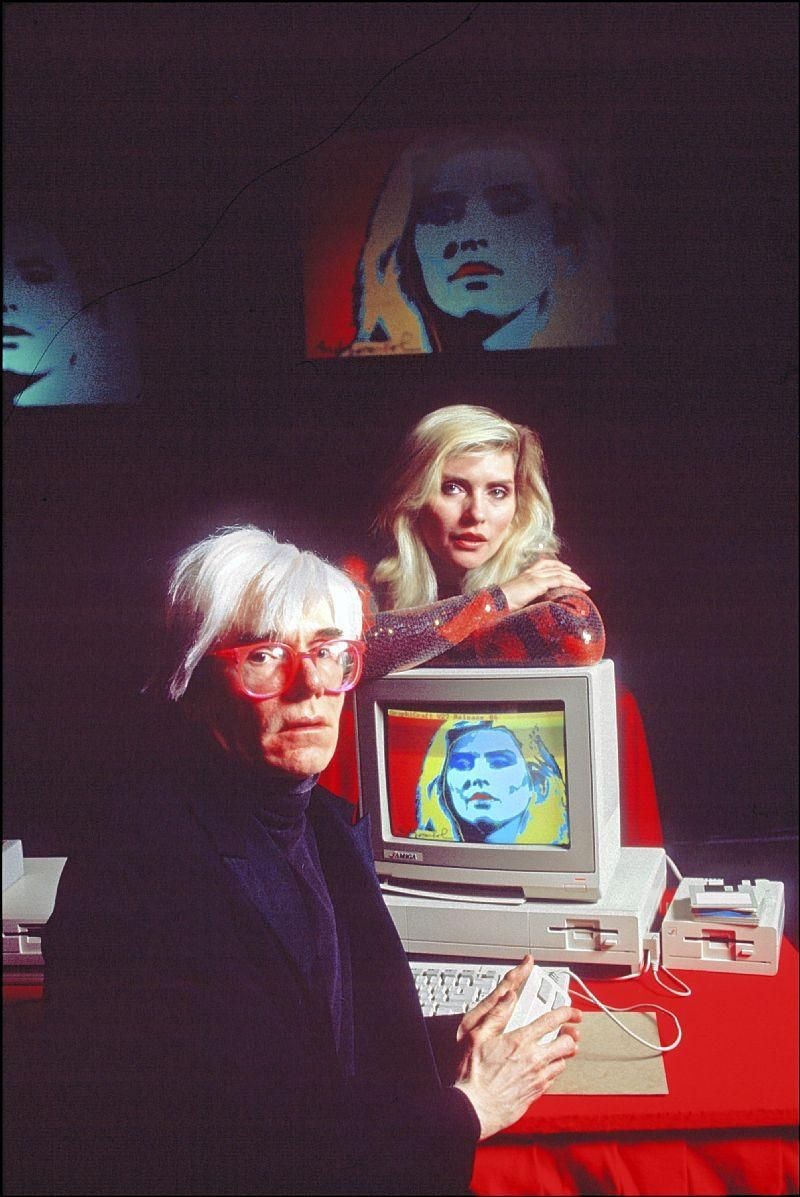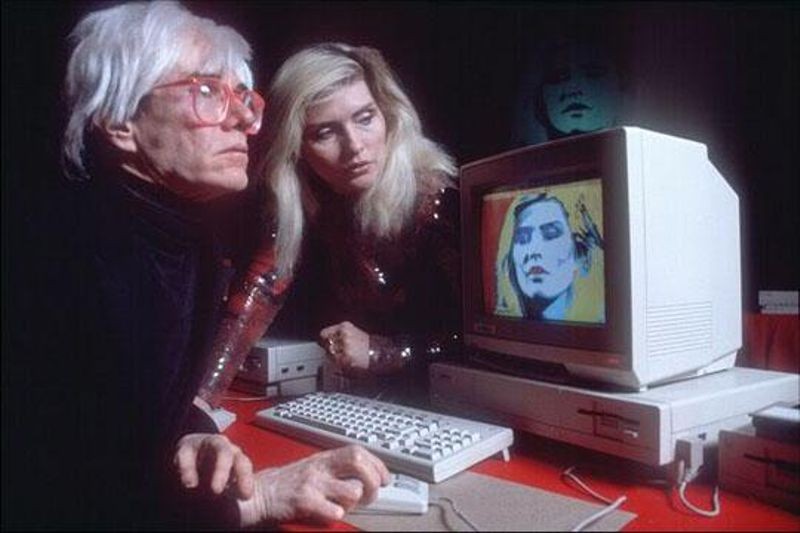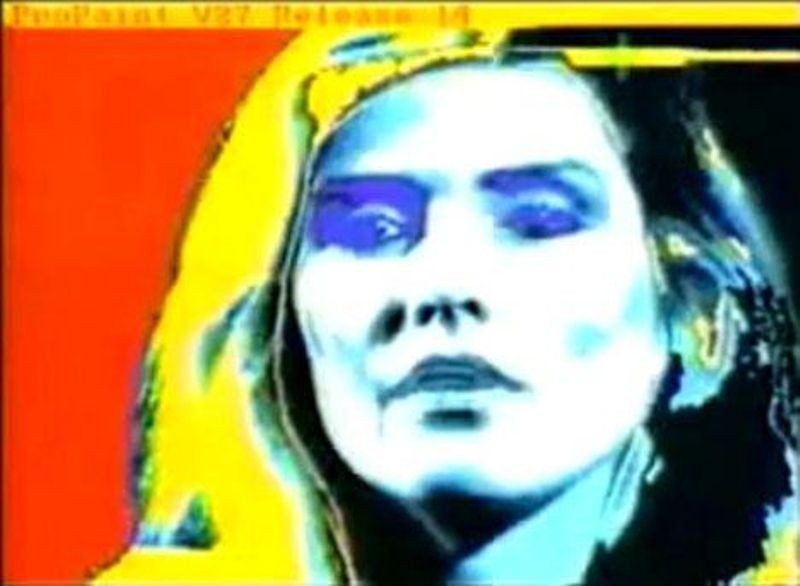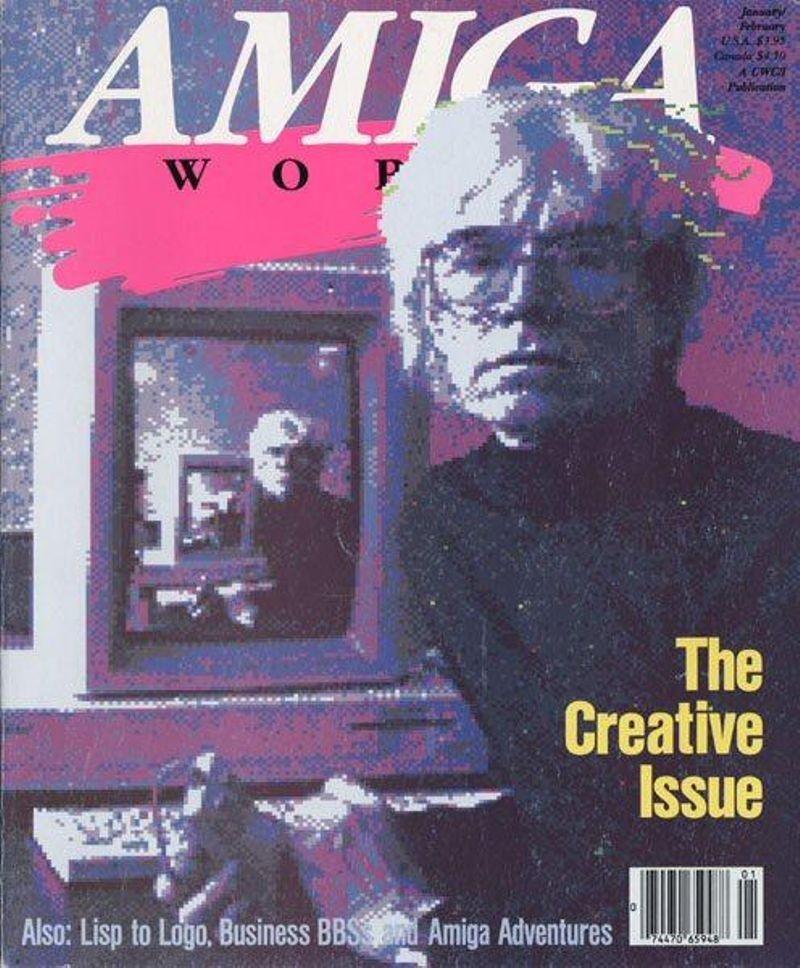

Andy Warhol with Debbie Harry at the 1985 Amiga Launch at Lincoln Center
People don’t associate legendary Pop artist Andy Warhol with the computer. My first thoughts go to Campbell Soup cans, Marilyn Monroe, and his film works. While most of Warhol’s creative output happened in the 1960s, when only a few serious artists had access to and used computers, he continued to paint and create artworks up until his death in 1987. Towards the end of his life, he began to create works using Amiga computers. It should be no surprise that Warhol was interested in computers; he’d been fascinated with popular culture for decades and computers had moved beyond being mysterious tools to become items encountered in everyday life. That alone would get Warhol interested in them as commodity objects, but add to that the artistic potential of such machines and it’s not at all a stretch to see his interest.
In Walter Isaacson’s biography of Steve Jobs, he describes Sean Lennon’s ninth birthday party at the Dakota Apartments in New York. Dozens of significant figures in the arts and entertainment industry were there to attend the birthday of the son of the late John Lennon, including artists Louise Nevelson and Keith Haring. Warhol was in attendance, as he was at a great many New York society parties, but a slightly surprising guest was Steve Jobs, co-founder of Apple Computer. Jobs brought with him a Macintosh computer. At first, Warhol and Haring watched as Jobs showed Sean how to work with the machine. After a while, Warhol took Sean’s place in front of the Mac while Jobs tried to explain how to use a mouse. It took a while, but finally Warhol used the Pencil tool to draw.
“Look! Keith! I drew a circle!” Warhol said to Haring.
This was Warhol’s introduction to creating art with computers, though Jobs had called him previously trying to give him a Macintosh. Warhol had never returned his calls, seeing no reason to consider computers.

Andy manipulates Debbie Harry’s image using ProPaint on the Amiga 1000
Less than a year later, Commodore launched the Amiga 1000 personal computer. The launch was held on July 23, 1985, in the Vivian Beaumont Theater, a part of New York’s Lincoln Center. It attracted not only the typical technology crowd, but also those interested in music, film, and art. The Amiga 1000 was being positioned as a ‘multi-media’ computer, usable in many fields of creative endeavor. Apple’s Macintosh had launched a year earlier and was already starting to gain a following among the arts and design communities. Launching a computer at a major cultural venue was still somewhat new, but the scope of the introduction was on-par with the Macintosh introduction the previous year. One of the highlights of the event was the creation of a piece of art live, on stage.
Andy Warhol was the creator.
The subject of his work? Debbie Harry, best known for her work as the lead singer in the seminal New Wave band Blondie.
The creation began with Warhol capturing an image of Harry and then manipulating it, using ProPaint, a paint system that was still in the early stages of testing. A photograph of Harry was digitized and Warhol manipulated the colors of the image using ProPaint. The resulting image was quite similar to the silk-screened images Warhol created of stars such as Monroe, Elvis, and Liza Minnelli during his heyday.
The piece would be very easy to create today; in fact it might seem a bit primitive. In the ensuing twenty-eight years, programs such as Photoshop, as well as much-expanded research by the arts community, has made images like the one that Andy created at Lincoln Center seem downright ordinary. Still, Warhol was obviously having fun creating the work, and was heard to quip “the thing that I like most about doing art on the computer is that it looks like my work.”

Debbie Harry by Andy Warhol (and an assist from ProPaint)
Warhol had been involved with filmmaking dating back to the 1960s and the earliest days of The Factory. Many of the films Warhol made were in the style of the early silent actualities, though taken to a grander scale, with films of simple activities such as eating or sleeping. At other points, he shot newsreel-type footage of various art events, activities around The Factory, and music films, notably with The Velvet Underground. He shot hundreds of ‘screen tests’ of stars and later produced various narrative works, some of which he directed, others by Paul Morrissey, including Women in Revolt, Blood for Dracula and Flesh for Frankenstein. Many of Warhol’s films were poorly regarded by the cinema establishment. Poet and critic Dana Gioia once noted, “No director in human history has ever or will ever make worse movies. Warhol makes Ed Wood look like Ingmar Bergman.” Warhol also produced a television series for MTV from 1985 to 1987.
Warhol acquired several Amigas and began creating works with them, including a short film using the Amiga 1000 titled YOU ARE THE ONE. This featured twenty digitized images of Marilyn Monroe from 1950s newsreel footage, manipulated by Warhol with the Amiga. This was set to music. The film was never shown while Warhol was alive, but was discovered in 2001 among many of Warhol’s computer disks. The music was discovered on another disk labeled “soundtracks for imaginary movies, ie. you are the one.”Despite much legal wrangling, including the potential seizure of the film, the Museum of New Art in Detroit premiered the film in 2006, showing it only for one day.

Warhol on the cover of Amiga World
Warhol’s other works created for the Amiga are somewhat more obscure, though one was used as the cover for The Creative Issue of Amiga World magazine. The image is of Andy Warhol with an Amiga showing an image of Andy Warhol with an Amiga showing an image of Andy Warhol with an Amiga. Like many of Warhol’s works, it was about the imagery of our world and how the artist plays in it.
While Andy Warhol’s traditional artworks may be far better known, had he lived a few more years, he may well have been the most important of all computer artists.
Christie’s is hosting a pop-up exhibition Viral: Andy Warhol and the Image before the Internet Age at the Computer History Museum in partnership with The Andy Warhol Foundation. The viewing is free and open to the public June 24th through 28th.